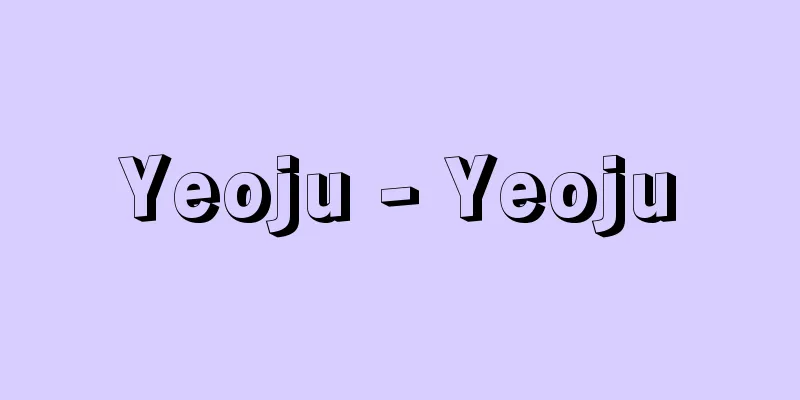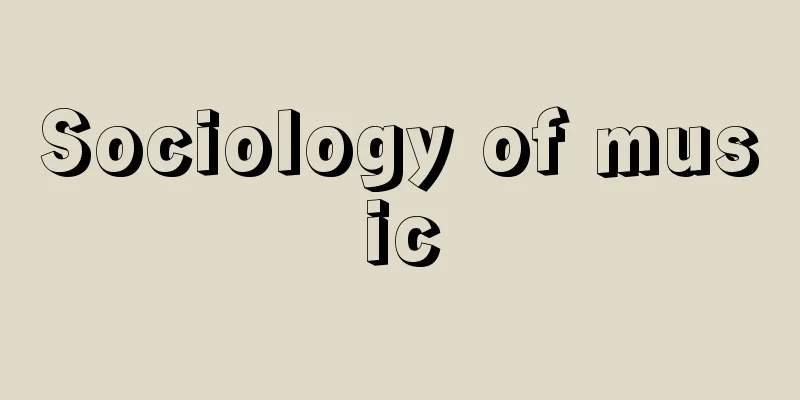Monk - Yes

|
It is an abbreviation of the transliteration of the Sanskrit word Sagha, Sōgya. It can be loosely translated as crowd and means group, but it specifically refers to a religious order of Buddhist monks. Buddhists, including believers, are not called monks. A group of four or more practitioners is called a sōga, but in Japan, even a single monk is called a monk or soryo. In India, monks are called bhikkhu. Bhikkhu means someone who begs for food, and a group of bhikkhu is called a monk (bhikkuni). A female practitioner is called a bhikkuni, and a group of such monks is called a bhikkuni-sō. In Japan, a woman who has left the family home is also called a nun (ama). The ideal of the sōga is to practice peace, and for that reason they are called harmonious monks. As one of the Three Treasures of Buddha, Dharma, and Sangha, monks are the objects of devout reverence and are also the practitioners and transmitters of the teachings, so if monks disappeared, Buddhism would also disappear. [Akira Hirakawa] Primitive Buddhist monkIn the early Buddhist period, monks were divided into present monks and four-way monks. The monks formed by the gathering of bhikshu from each region were present monks, and there were many of them. The entire group of present monks, including bhikshu of the future, were the four-way monks, also known as permanent monks. The Shihosousou are a religious organization in the ideal sense, and are symbolized by the precepts (religious organization law) established by Shakyamuni. Furthermore, the property of the religious organization is also owned by the Shihosousou. The land, buildings, equipment such as beds, furniture, and trees within the temple are Shihosousou property. The current monks can use these, but they are not allowed to sell them or dispose of them, and they are property that must be passed down forever into the future. Therefore, they are called permanent monk property (jibutsu). Furthermore, the Shihosousou property should be used fairly by the current monks, and even monks who come from other regions automatically become members of the current monks and are eligible to use the rooms and bedding within the temple. Since it is open to the use of monks from all ten directions, it is also called Jipposousou property. However, the land on which the pagoda stands is pagoda land, which is donated to the Buddha and becomes Buddha property, and monks cannot use it. Donations made to a pagoda are used by its guardian. The Four Sangha Order as an idea is the law of the religious order, which is divided into two parts. One is the precepts, which consist of about 250 rules for bhikkhus and 350 rules for bhikkhunis. These have absolute authority as they were established by Shakyamuni, and cannot be altered by his disciples. The second is the rules for running the religious order, which are called konma. There are about 100 types of konma, and current monks meet, decide on matters, and manage the monks according to the rules of these konma. These rules govern current monks, and go beyond current monks. A present monk is a sangha made up of bhikkhus within a certain area. There is no set size for the area, but it is determined by a boundary that is convenient for meetings. Any bhikkhus who enters the boundary automatically becomes a member of that present monk. Present monks live by receiving the monk's property in an equal way from all four directions. Food and clothing donated to them by believers are distributed equally, and flowers and fruit from the flower and fruit trees on the monk's land also become the present monk's property. In addition to this, bhikkhus may individually beg for food and clothing from believers. They live their ascetic life on this basis. When a bhikkhu dies, any heavy items from the deceased bhikkhu's possessions, such as a residence and bed, are put into the monk's property in all four directions, the three robes (lower robe, upper robe, outer robe) are given to the bhikkhu who is caring for the sick, and the remaining light items are distributed among the present monks. Those who wish to join the order of monks must give up worldly ties such as relatives, wife, and children, as well as property, honor, and rank, become disciples of Shakyamuni, and take the entrance exam to become a bhikkhu. This entrance exam is called the full precept kamma, and the place where it is taken is called the ordination platform. There are no ranks among monks, and they live on an equal footing, with seniority determined by the number of years (horo) they have been ordained. When joining the order, a priest (upajaya, parent teacher) is chosen. The priest is the teacher who educates the new bhikkhu, and the priest and disciple live together, help each other, and maintain a father-son relationship. In addition, teachers who teach the sutras, precepts, zazen, etc. are called ajari (a transliteration of acharya). Those under the age of 20 are not allowed to become bhikkhu, and those who wish to join the order receive the Ten Precepts and become novice monks (sham). Novices receive instruction from monks and live among the monk's sangha. Women become novice nuns. Between novice and monk, there is a two-year period as a shogakunyo (a woman studying in the proper academic field). These are the five groups of nuns who enter the monastic world. The current monks are governed autonomously according to the provisions of the precepts and the rules for running the sect (kamma). There is no higher sect or ruler of the sect that governs them. When an issue arises, the current monks convene a meeting, discuss the issue using the kamma method, and make a decision by consensus. The chairman of this meeting is called the kamma master. In special cases, majority vote (multiple people) is used, but in principle, decisions are made unanimously. All must obey this decision. Regular meetings are held once every two weeks, when the current monks meet to check that the bhikkhus are observing the precepts (fusatsu meetings, fusatsu kamma), and in the rainy season each year, when they settle in one place for three months to practice. Because it is inconvenient to travel during the rainy season, they stop traveling and stay in the temple, where they intensively study the precepts and zazen. After three months, a ceremony to disband the retreat is held, and each monk sets off on his or her own journey. This disbanding ceremony is called the Jisi Karma. Karma to punish monks who do not submit to the monks' decisions or who break the precepts, as well as the election of current monks as officers and the distribution of current monks' belongings, are held in conjunction with the Fusatsukasa, but if a dispute occurs within the Sangha, an emergency meeting of the current monks is held. The above precepts and Karma for monks from the time of the primitive religious organization are still practiced today in southern Buddhism in Sri Lanka (Ceylon), Myanmar (Burma), Thailand, and other areas, and in China they were primarily carried out by the Vinaya sect. [Akira Hirakawa] Chinese Buddhist monkBuddhism was introduced to China in the 1st century, but the complete set of precepts was not introduced until the 5th century. After that, the Four Parts of the Vinaya (Shibunritsu) established precepts such as receiving the precepts, upholding the Buddha's will, and staying in a safe place. In particular, the doctrine of the Nanzan Vinaya school was established by Daoxuan (596-667). All monks of the thirteen schools of Chinese Buddhism strictly followed the rules of the Vinaya school and received the Mahayana precepts in the Brahma Net Sutra (Bonmokyo) and practiced asceticism. However, in order to maintain the monastic life of the monks, the religious community received the king's devotees and financial support, but on the other hand, the monastic community could not avoid the king's interference. Early Zen sects disliked this, and lived a self-sufficient life of asceticism in hiding in the mountains and fields, and created rules of asceticism suitable for Chinese people, which they called "Pure Rules." This was Buddhism suitable for Chinese people, and Zen sect became the most widespread in China. After the establishment of the People's Republic, Buddhism was persecuted, monks were forced to return to secular life, and temples were converted into factories and schools. However, after the end of the Red Guard uprising, efforts were made to revive Buddhism, famous temples were restored, and the number of monks increased. [Akira Hirakawa] Japanese Buddhist monkDuring the Nara period, Ganjin came to Japan from China, built an ordination platform at Todaiji Temple, and performed the full ordination karma. After this, monks were ordained and the monks were established. The "shodai" in Toshodaiji Temple is a transliteration of the Sanskrit word chaturdisha sangha, meaning "monks of the four directions." Ganjin founded the Ritsu sect in an attempt to establish a system of monks of the four directions at Toshodaiji Temple. However, the Ritsu sect soon declined, and an autonomous sangha did not develop in Japan. Japanese Buddhism was founded by Prince Shotoku, and had a strong character as a state Buddhism, developing under state control. In particular, Saicho established Enryakuji Temple on Mount Hiei, set up a Mahayana ordination platform there, and attempted to train Bodhisattva monks such as national treasures, national teachers, and national servants, but this was an attempt to maintain order in the religious community only through the precepts of the Bon'mo-kyo, not the ancient 250 precepts, and was a state-centered view of the religious community. After that, the precepts for becoming a monk became merely a formality, and since monks existed in an incomplete form even before the arrival of Ganjin, the monasticism of Japanese Buddhism was extremely incomplete, and as the precepts declined, after the Meiji period monks also openly married, and the distinction between monks and laypeople disappeared. In China and Japan, the state established various systems to control Buddhist sects by incorporating them into administrative organizations, enacting laws such as the Taoist Law (China) and the Law for Monks and Nuns (Japan), and appointed monks to regulate monks and nuns. Also, a system unique to Japan was the monk rank system. Ranks were awarded by the imperial court according to the monks' learning, virtue, years of service, etc., but later the terms monk and monk rank came to be used interchangeably. [Akira Hirakawa] [Reference items] | | | |Source: Shogakukan Encyclopedia Nipponica About Encyclopedia Nipponica Information | Legend |
|
サンスクリット語サンガSaghaの音訳僧伽(そうぎゃ)の略。衆と意訳し、団体を意味するが、とくに仏教の出家修行者の教団をさす。信者を含めた仏教徒を僧とはいわない。4人以上の修行者が集まったとき僧伽となるが、しかし日本では、1人の坊さんをも僧、僧侶(そうりょ)とよぶ。インドでは出家者を比丘(びく)とよぶ。比丘とは食を請う人の意で、比丘の団体が僧(比丘僧)である。女性の修行者を比丘尼(びくに)といい、その団体を比丘尼僧という。日本では、出家した女性を尼(あま)ともいう。僧伽の理想は平和を実践することであり、そのため和合僧とよばれる。僧は仏・法・僧の三宝の一つとして、帰依(きえ)尊崇の対象であり、さらに教法の実践者・伝持者であるから、僧がなくなれば仏教も消滅するわけである。 [平川 彰] 原始仏教の僧原始仏教時代には、僧は現前僧と四方僧とに区別されていた。各地区の比丘が集まって形成する僧が現前僧であり、現前僧は多数ある。それらの現前僧の全体、さらに未来の比丘までも含めた僧が四方僧で、常住僧ともいう。 四方僧は理念としての教団であり、釈迦(しゃか)の制定した戒律(教団法)によって象徴される。さらに教団の財産も四方僧の所有となっている。寺の土地、建物、寝台などの備品、什器(じゅうき)、寺内の樹木などは四方僧物である。現前僧の比丘たちはこれを利用することはできるが、売り払うなどの処分は許されず、将来永久に伝えていくべき財産である。ゆえに常住僧物(什物)という。さらに四方僧物は、現前僧の比丘たちが公平に利用すべきであり、他地方から到来した比丘でも、自動的にその現前僧の成員になり、寺内の居室や寝具などの使用の資格をうる。十方(じっぽう)の比丘の使用に開放されているので、十方僧物ともいう。しかし仏塔のある土地は塔地であり、これは仏に寄進されたものとして、仏物となり、僧はこれを受用することはできない。仏塔に布施されたものは仏塔の守護者が受用する。 理念としての四方僧は教団法であり、これは二つに分かれる。一つは戒律であり、比丘に約250条、比丘尼に約350条ほどある。これは釈迦の制定したものとして絶対の権威をもち、弟子たちの改変できないものである。第二は教団を運営する規則であり、これを羯磨(こんま)という。約100種の羯磨があり、現前僧はこの羯磨の規則によって集会し、議事を決定し、僧を運営する。これらの規則は、現前僧を支配するのであり、現前僧を超えたものである。 現前僧は、一定の区域内の比丘で構成する僧伽である。区域の広さに決まりはないが、集会に便利な範囲で結界して決定する。その結界内に入った比丘は自動的にその現前僧の成員となる。現前僧は四方僧物を公平に受用して生活する。信者から現前僧に布施された食物や衣服は平等に分配し、僧地の華果(けか)樹から得た華(はな)や果実も現前僧物となる。比丘はこのほかに個人で、信者に食物や衣服を乞食(こつじき)してよい。このような生活基盤にたって修行生活をなす。比丘が亡くなった場合、亡比丘の財物のうち、住居や寝台などの重物があれば、四方僧物に入れ、三衣(さんえ)(下衣(げえ)、上衣(じょうえ)、外衣(げえ))は看病比丘に与え、残りの軽物は現前僧で分配する。 僧に入団する希望者は、親族妻子などの世俗の縁を捨て、財産、名誉、階級を捨て、釈迦の弟子となり、入団試験を受けて比丘となる。この入団試験を具足戒(ぐそくかい)羯磨といい、受ける場所を戒壇という。僧には階級はなく、平等の世界であり、出家してからの年数(法臘(ほうろう))によって、長幼の秩序をたてる。入団のとき和尚(おしょう)(ウパッジャーヤ、親教師)を決める。和尚は新比丘を教育する師であり、和尚と弟子は生活をともにし、助け合い、父子のような関係を保つ。そのほか経典や戒律、坐禅(ざぜん)などを教える師を阿闍梨(あじゃり)(アーチャリャの音訳)という。20歳未満の者は比丘になることは許されず、入団を希望する者は十戒を受けて沙弥(しゃみ)となる。沙弥は比丘の指導を受け、比丘僧伽のなかで生活する。女性の場合は沙弥尼となる。沙弥尼と比丘尼の間には2年間の正学女(しょうがくにょ)の期間がある。以上を出家の五衆という。 現前僧は、戒律の条文と教団運営規則(羯磨)とによって、自治的に運営される。これを支配する上の教団や教団の支配者はない。現前僧は事が起こると全員を招集し、羯磨作法によって問題を議し、全員の総意によって決定する。この会議の議長を羯磨師という。特別の場合には多数決(多人語)も採用するが、原則としては全会一致である。この議決には全員が服従しなければならない。定例の集会は、半月1回現前僧が集会して、比丘たちが戒律を守っていることを確認する布薩(ふさつ)の集会(布薩羯磨)と、毎年雨期に3か月一か所に定住して修行する雨安居(うあんご)がある。雨期には遊行(ゆぎょう)が不便であるため、遊行をやめ寺院に止住し、戒律や坐禅などを集中的に学ぶ。3か月を経ると安居の解散式を行い、各自遊行に出発する。この解散式を自恣(じし)羯磨という。僧の決定に服従しない比丘や戒律を破った比丘に罰を与える羯磨や、現前僧の役員選出羯磨、現前僧物の分配羯磨などは、布薩のとき付随して行われるが、僧伽に諍(あらそ)いが起これば、臨時に現前僧の集会がなされる。以上の原始教団時代の僧の戒律や羯磨は、現在でもスリランカ(セイロン)、ミャンマー(ビルマ)、タイなどの南方仏教で実行されており、中国では律宗が中心になって実行した。 [平川 彰] 中国仏教の僧中国に仏教が伝わったのは西暦1世紀であるが、完全な戒律が伝わったのは5世紀である。それ以後、『四分律(しぶんりつ)』によって、受戒、布薩、安居などの戒律が整備され、とくに道宣(どうせん)(596―667)によって南山律宗の教理が確立し、中国仏教十三宗の僧はすべて律宗の規則によって、出家生活を厳守し、さらに『梵網経(ぼんもうきょう)』によって大乗戒を受けて修行した。ただし僧の出家生活を維持するために、教団は国王の帰依(きえ)や経済的援助を受けたので、反面、僧団は国王の干渉を避けられなかった。初期の禅宗はこれを嫌い、山野に隠れて自給自足の修行生活をなし、中国人に適した修行規則をつくり、「清規(しんぎ)」とよんだ。これは中国人に適した仏教であったので、禅宗は中国でもっとも広く行われた。 人民共和国になって、仏教は迫害を受け、僧は還俗(げんぞく)し、寺は工場や学校に転用されたが、紅衛兵事件の終息後は、仏教復興が計られ、名刹(めいさつ)寺院も復興し、僧の数も増大している。 [平川 彰] 日本仏教の僧奈良時代に鑑真(がんじん)が唐より来朝して、東大寺に戒壇をつくり、具足戒羯磨を行ってから、比丘ができ、僧が成立した。唐招提寺(とうしょうだいじ)の招提とは招提僧、すなわちサンスクリット語のチャツルディシャ・サンガの音訳であり、四方僧の意味である。鑑真は唐招提寺によって四方僧の制度を確立しようとして、律宗をおこした。しかし律宗はまもなく衰え、自治的な僧伽は日本には育たなかった。日本仏教は聖徳太子によって基礎を置かれ、国家仏教の性格が強く、国家の統制のもとに発展した。とくに最澄(さいちょう)は比叡山(ひえいざん)に延暦寺(えんりゃくじ)をおこし、ここに大乗戒壇を設け、国宝、国師、国用などの菩薩(ぼさつ)僧を養成しようとしたが、これは古来の二百五十戒によらず、『梵網経』の説く戒のみによって教団の秩序を保とうとするものであり、国家中心の教団観であった。その後、僧になるにも受戒は形式的になり、しかも鑑真来朝以前にも不完全な形で僧は存在したから、日本仏教の出家主義はきわめて不完全であり、戒律の衰えとともに、明治以後には僧の妻帯も公然となり、僧俗の区別がなくなった。 なお、中国や日本では国家が仏教教団を行政組織に組み入れて支配するために種々の制度を設け、道僧格(中国)や僧尼令(日本)などの法律を制定し、さらに僧尼を取り締まるため僧官を任命した。また日本特有のものとして、僧位の制がある。それは僧の学問や徳行、年数などに応じて朝廷から位が与えられたものであるが、のちには僧官と僧位は混同して用いられた。 [平川 彰] [参照項目] | | | |出典 小学館 日本大百科全書(ニッポニカ)日本大百科全書(ニッポニカ)について 情報 | 凡例 |
<<: Layer - Sou (English spelling)
Recommend
Tatsukichi Minobe - Tatsukichi Minobe
Constitutional and administrative law scholar. A ...
holy basil
…A perennial plant that is worshipped as a sacred...
Oxidation and reduction
In the narrowest sense, oxidation refers to a subs...
Psillacula alexandri (English spelling) Psillaculaalexandri
…Parakeet [Takashi Saito]. . . *Some of the termi...
Air cannon
An air gun made by Kunitomo Tobei during the Bunse...
Pubic hair belief
…But it is hard to believe that Yang Guifei's...
Illuminance meter
An instrument that measures the luminous flux (lu...
Ātreya (English spelling) Atreya
...Already in the 6th century BCE, there were two...
Husband and wife - Husband and wife
The word fuufu, along with "meoto," is ...
Tubular brain - sac
…Of these, the neurons of the central nervous sys...
Internal virtue - Naitoku
〘Noun〙① Virtue that is accumulated in the heart an...
stop
〘noun〙 (stop)① (━suru) To stop (something that is ...
Dark movie
...During and after World War II in the 1940s, th...
Deterioration - Rekka (English spelling)
Damage to materials caused by physical, chemical, ...
Asia - Asia (English spelling)
Overview The origin of the name Asia is said to b...









